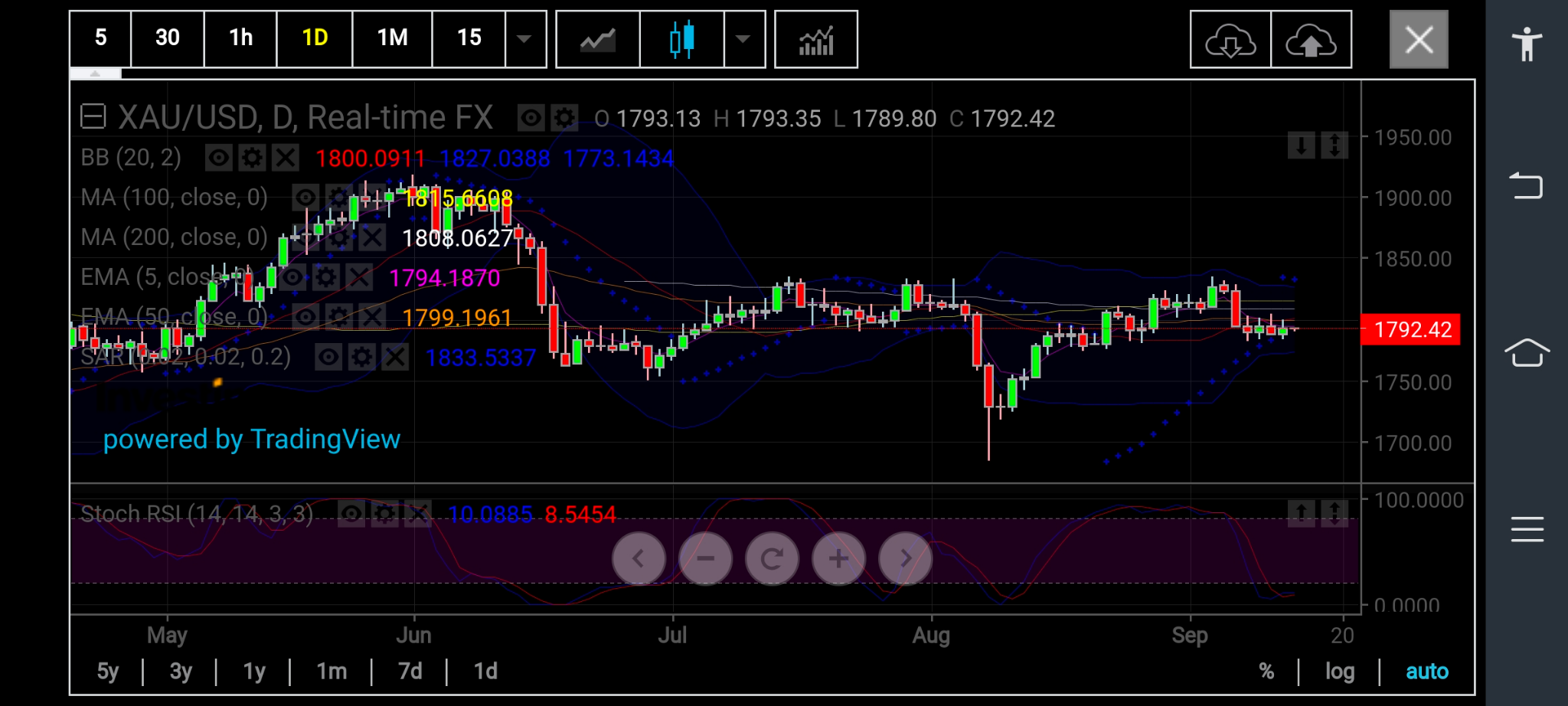Every inflation data print these days seem to spell doom for gold and the US CPI number, scheduled for release Tuesday, isn't expected to be much different.
Forecasters are expecting the figures to be a touch lower than last month—with 5.3% growth expected for the year to August, versus 5.4% for July—the Consumer Price Index on its own doesn’t portend disaster for gold.
Yet, if the dollar and US Treasury yields start ramping higher on the number—amid the theory that the Federal Reserve could still taper its generous stimulus despite spotty jobs recovery from the pandemic—gold could be in for a whacking.
Will Gold Be the 'Biggest Casualty' of CPI Data?
Jeffrey Halley, head of Asia-Pacific research at online trading platform OANDA, deduced as much in a note issued at noon in Singapore on Tuesday, some eight hours before the US release of the CPI:
“With markets back on inflation and tapering watch, the path of least resistance is higher prints from the data."
“In that circumstance, I expect the US Dollar to spike, US yields to rise, and equities to probably have a bad day at the office. But given the lack of momentum anywhere at the moment, I'm not sure it will last.”
Sadly, the “the biggest casualty could be gold,” Halley concluded, adding:
“Ironic, really, when it's supposed to be an inflation hedge. I have long since concluded that gold does hedge inflation, but only Latin American-style inflation. We're not there yet.”
Inflation in South American countries are at multi-year highs, with Brazil experiencing a 9% year-on-year growth, the highest since 2016; Mexico 5.8%, highest since late 2017; Peru 5%, highest since 2009 and Chile 4.5%, highest since 2016.
Most-active December gold on New York’s COMEX hovered at just under $1,793 in Asian trading on Tuesday, barely changed from the previous session, when it settled up $2.30, or 0.1%, at $1,794.40 after moving in a $5-bracket between 1,800.05 and 1,785.10.
The Dollar Index, which pits the greenback against six major currencies, didn’t move much either, drifting at 92.59. The benchmark 10-year note for US Treasury yields was up 0.7% on the day.
December gold fell 2.3% last week, sliding its most since the week to July 29, and booking its first weekly loss in five. The slump came as the previous week’s euphoria for gold longs over the dismal US jobs report for August faded.
Renewed Speculation for Fed Taper Despite Woeful US Jobs
In its place was renewed speculation that the Fed will be pressured to act quicker on inflation as data showed US producer prices rising by 8.3% in August, their most in over a decade. Until the so-called PPI data emerged, the argument for a taper had been considerably weakened by the August jobs report, which came in at 70% below economists’ targets.
With the Fed entering its typical blackout period ahead of its Sept. 21-22 policy meeting, focus could be larger than usual on the August CPI numbers.
The question of when the central bank ought to taper its stimulus and raise interest rates has been hotly debated in recent months as economic recovery conflicts with a resurgence of the coronavirus’ Delta variant.
The Fed’s stimulus program and other monetary accommodation have been blamed for aggravating price pressures in the United States. The central bank has been buying $120 billion in bonds and other assets since the COVID-19 outbreak of March 2020 to support the economy. It has also been keeping interest rates at virtually zero levels for the past 18 months.
After declining 3.5% in 2020 from business shutdowns owing to COVID-19, the US economy expanded robustly this year, expanding 6.5% in the second quarter, in line with the Fed’s forecast
Inflation Outpacing US Growth
The Fed’s problem, however, is inflation, which has been outpacing economic growth.
The Fed’s preferred gauge for inflation—the core Personal Consumption Expenditures Index which excludes volatile food and energy prices—rose 3.6% in the year through July, its most since 1991. The PCE Index, including energy and food, rose 4.2% year-on-year.
The Fed’s own target for inflation is 2% per annum.
So, back to the question of where gold could go post-CPI data?

Chart courtesy of SK Charting
According to Sunil Kumar Dixit, chief technical strategist at Kolkata, India-based SK Charting, gold’s price action of the last three months had established a strong wall of resistance at $1,835.
“This has all the suppliers positioned at elevated levels ready and equipped to hammer the bulls down to the $1,750-$1,670 areas, then refill the tanks and wait for the prey again as the climb uphill resumes.”
Dixit said spot gold’s drop this week to $1,792, with daily close at $1,794 below the critical support of $1,797, coincides with the middle Bollinger Band in the Daily Chart, the 50-Exponential Moving Average on the weekly chart and the 50% Fibonacci retracement measured to the March 2021 low of $1,678 low and May 2021 peak of $1,916.
“All these make a case for an extended correction to $1,768, based on the 61.8% Fibonacci level. It could go even lower to $1,750 on the horizontal static support area,” Dixit added.
In the event gold sustains above $1,797, its next test would be the 5-week EMA of $1,803 and the 5-Day EMA of $1,805. It could also reclaim the 100-Day SMA of $1,815, which might serve as an acceleration point for the 38.2% Fibonacci level of $1,825. Stochastic RSI on Daily chart reads 35/62 with a bearish overlap, hinting towards further down move.
“The main trend changes to up if there’s a decisive close above the $1,835 obstacle, which will open the gates for the 23.6% Fibonacci level of $1,860 and the critical top of $1,920,” said Dixit.
Disclaimer: Barani Krishnan uses a range of views outside his own to bring diversity to his analysis of any market. For neutrality, he sometimes presents contrarian views and market variables. He does not hold a position in the commodities and securities he writes about.
